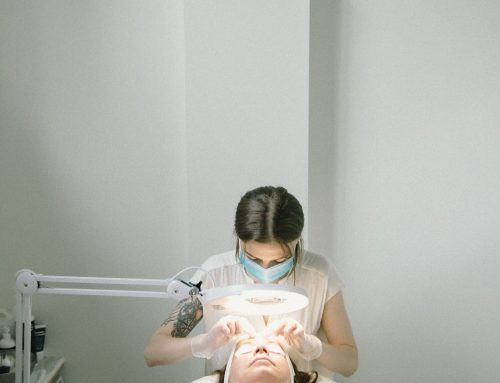 As our selection of skin treatments is quite specialized, and so we are often asked which is best: a chemical peel or an antioxidant peel. In this blog post we explain how each treatment is alike and the differences between then to help you decide which is right for your skin and goals.
As our selection of skin treatments is quite specialized, and so we are often asked which is best: a chemical peel or an antioxidant peel. In this blog post we explain how each treatment is alike and the differences between then to help you decide which is right for your skin and goals.
Chemical peel vs antioxidant peel: What is the difference?
Both have fantastic skin smoothing benefits, but each have unique properties that differentiate how they work on the skin. The ideal treatment for your needs will depend on your skin tone, condition, and goals.
Chemical Peel
Chemical peel is a general term for the use of a topically applied formulation that breaks the bonds that hold the surface dead skin cells together. This action has a resurfacing effect, removing a layer of dead skin to reveal fresh and smooth new skin from below.
A chemical peel is most commonly comprised of beta hydroxy acids (BHAs), alpha hydroxy acids (AHAs), and polyhydroxy acids (PHAs) including but not limited to:
- salicylic acid (BHA)
- lactic acid (AHA)
- glycolic acid (AHA)
- phytic acid (AHA)
- lactobionic acid (PHA)
Each type of acid has its respective properties and benefits.
- Typically BHAs are best to address surface congestion (bumpiness, comedones, a.k.a. blackheads) and acne lesions.
- AHAs work deeper in the skin which helps to activate cell renewal. They can have other benefits such as improving hydration, brightening the skin, and inhibiting pigmentation.
- PHAs are second generation cousins to AHAs. They have similar actions on the skin with the additional benefit of fighting glycation — a process that leads to the breakdown of collagen and elastin in the skin.
Antioxidant Peel
The Antioxidant Peel treatment that we offer is composed of amino acid fillagrin (AFA). Filaggrin is a protein that occurs in the epidermis (the top layers of the skin) and is integral to the skin’s ability to retain moisture. Here are the main ways it differs from a hydroxy acid chemical peel:
- When applied topically at a specific pH, the AFA compound acts as an exfoliant and antioxidant without the irritation that can occur with traditional chemical peel formulations, thus making this treatment an ideal and safe choice for sensitive skin and melanin-rich skin tones.
- AFAs supplement the natural moisture system, preventing skin dryness post-peel.
- The antioxidant aspect of AFAs make them very effective in brightening the skin and minimizing the appearance of uneven pigmentation.
- AFAs are sun-safe. They do not make your skin prone to sun burn after the treatment, so you don’t have to be as concerned with UV exposure after a treatment.
Chemical Peel versus Antioxidant Peel: Which one is right for you?
Whenever you are choosing a skin treatment for your skin, you want to consider your skin concerns and goals. Generally speaking, a chemical peel or antioxidant peel is a next level skin resurfacing treatment that will help you achieve smooth and glowing skin. When deciding between a chemical peel and an antioxidant AFA peel, you can use this chart as a guide to help you make your decision.
Both treatments share more in common than they differ, but each has their respective strengths. Hopefully this guide has helped you understand the difference between a chemical peel versus an antioxidant peel, but if you are still unsure which treatment is best for you—don’t worry—you can leave that decision in the hands of your certified skin therapist. You can either get in touch with us directly to discuss your needs and arrange an appointment, or you can book online for a customized clinical peel and we make any adjustments based on the professional skin analysis included with your treatment.







Leave A Comment